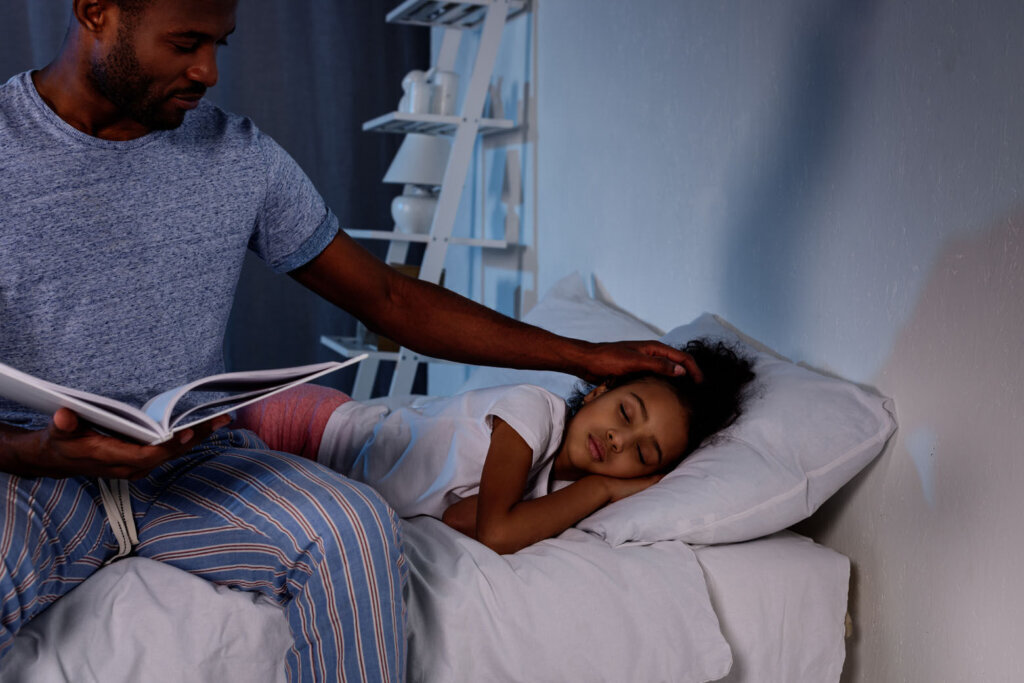
For many, gaining an hour of sleep is a time saver, but it’s worth keeping in mind that the change can impact sleep patterns in adults and children.
Early on Sunday, November 6, you’ll need to turn your clocks back by one hour to shift from Daylight Saving Time to Standard Time.
For many, gaining an hour of sleep is a time saver, but it’s worth keeping in mind that the change can impact sleep patterns in adults and children.
Dr. Tyish Hall Brown, a clinical psychologist and director of behavioral sleep medicine at D.C.’s Children’s National Hospital, told WTOP that it takes about five to seven days for our bodies to readjust after the time change.
“For some people, it takes longer and it can be a little bit more difficult for them to adjust because our circadian rhythms might be misaligned,” she said.
Hall Brown says she has five things that she recommends to make the transition to Standard Time easier on children. The first is keeping to a set time for bed.
“There will be some times where the kids may have more homework at night, or they may have an extracurricular activity that impinges on that.”
But, Hall Brown said, the more kids can stick with a specific time for bed, “the better our bodies will adjust.”
She also recommends trying to make sure kids get at least eight hours of sleep each night. With fewer daylight hours in the fall and winter, Hall Brown said it’s especially important to expose children to more sunlight.
“We want to take advantage of the light as much as possible,” said Hall Brown. When kids get up in the morning, encourage them to get outside “because it will also help our bodies get into a good routine.”
One thing that may sound counterintuitive to any parent: Try to avoid having school-aged children nap during the day.
“If a child naps during the day, they decrease their sleep need at night,” Hall Brown said. “If we can keep them from napping, that will help them be at their ‘peak tiredness,’ so to speak, at night.”
Hall Brown emphasizes that advice applies to older children, not infants and toddlers.
Another practice that can help as the time change approaches is making sure children have a pre-bedtime routine. About a half-hour before bedtime, have kids bathe, brush their teeth, put on their pajamas and then engage in an activity that helps them wind down, such as reading, listening to music or doing a relaxation exercise.
Finally, consider the setting for bed time. Ideally, their bedroom should be cool, dark and quiet: “Another easy thing is just making sure that our bedding is comfortable, that the bed is something that allows us to fall asleep.”
Hall Brown’s focus is on adolescents, and she says the time change from Daylight Saving to Standard Time can hit teens differently than younger children.
“The teen years are when there’s already transition due to physiology,” said Hall Brown. And the daily schedule of many teens is jam-packed. On top of homework and extracurricular activities, they may have a job, so Hall Brown said, “I always ask them to prioritize their sleep, make room for sleep.”
Phones, tablets, desktops
Hall Brown was asked about the impact that ever-present screens can have on the sleep of children and teenagers.
Phones and tablets have become part of a morning routine for adults who are setting up their day, she said. “You’re seeing what emails have come in, what your schedule is like and you may put it down after that,” said Hall Brown.
“I think for kids and for teens in particular, the phone is attached to them. It’s something they feel that they need and if they don’t have it, they feel a little naked.” Hall Brown said, parents can try to help teenagers see the advantages of having some time away from their screens. “It’s a conversation that you have to keep having with them over and over again.”
Brown Hall says parents can set limits on screen time and have kids charge their devices outside of their bedrooms overnight. “I have a friend of mine who will also turn off the Wi-Fi at a certain period of time” in effect calling an end to the day for surfing the web.
“It’s one of those things where I think if we have these frank conversations and help them to understand how it impacts them, that teens are able to make better decisions about their device use” Hall Brown said.
Stay connected with us on social media platform for instant update click here to join our Twitter, & Facebook
We are now on Telegram. Click here to join our channel (@TechiUpdate) and stay updated with the latest Technology headlines.
For all the latest Health & Fitness News Click Here
